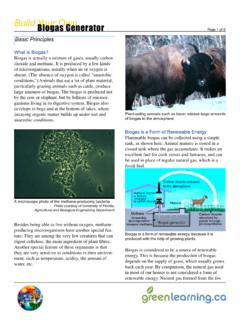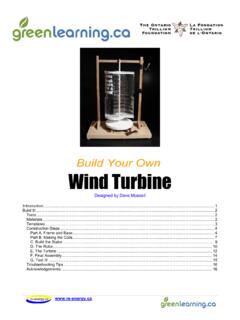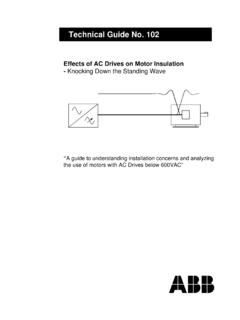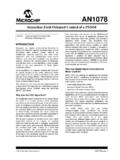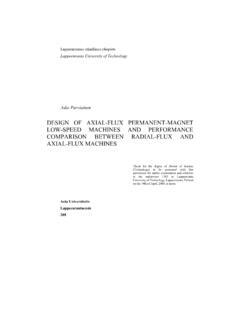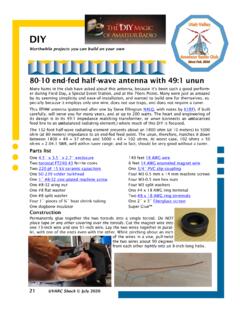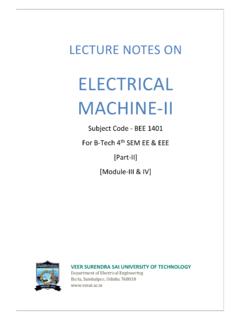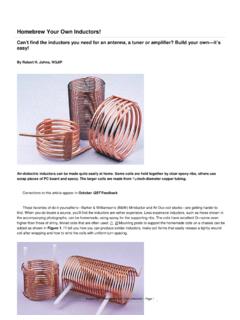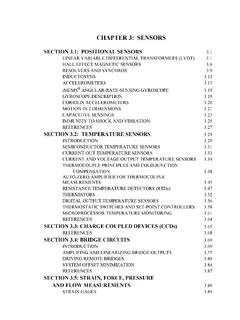Transcription of Build Your Own Hydroelectric Generator - re-energy.ca
1 Another internet tool by: Build Your OwnPage 1 of 9 Hydroelectric GeneratorA Renewable Energy Project KitThe Pembina InstituteMost machines that make electricity need some form of mechanical energy to get things started. Mechanical energy spins the Generator to make the electricity. In the case of hydroelectricity, the mechanical energy comes from large volumes of falling water. For more than 100 years, the simplest way to produce the volumes of falling water needed to make electricity has been to Build a dam. A dam stops the natural fl ow of a river, building up a deep reservoir behind it. However, large dams and reservoirs are not always appropriate, especially in the more ecologically sensitive areas of the planet.
2 For making small amounts of electricity without building a dam, the small-scale Hydroelectric Generator is often the best solution, especially where fast-fl owing streams on steep slopes are close by. A small-scale hydro system usually consists of an enclosed water wheel or turbine, which is made to spin by jets of high-velocity water. The water is taken from the stream and moved down slope to the turbine through a long pipe called a penstock. Water fl owing through the penstock picks up speed, and is directed at the blades of the turbine by nozzles. The turbine spins continuously, as long as there is water to drive it. The turbine is connected to an electrical Generator , and the electricity is then available for running appliances or charging batteries.
3 The spent water is returned to the stream. This kind of system is called a micro-hydro system, run-of-stream hydro or low-impact hydro. In this activity, you will use plastic spoons to Build a model of a simple micro-hydro system. It generates surprising amounts of electricity, provided you have a supply of pressurized water, such as from a lab sink. This model closely resembles real micro-hydro designs, and can produce enough electricity to light a small light BasicsCanada and many other countries depend on large-scale hydro developments for systems can provide clean, environmentally friendly electricity in rural completed micro-hydro internet tool by: Build Your OwnPage 2 of 9 Hydroelectric GeneratorA Renewable Energy Project KitThe Pembina InstituteMaking electricityWe are surrounded by hundreds of appliances that use electricity to do work.
4 But what is electricity? Basically, electricity is a fl ow of electrons in a metal wire , or some other conductor. Electrons are tiny particles found inside atoms, one of the basic Build -ing blocks of all matter. We call the fl ow of electrons through any conductor a current of electricity. Each electron carries a tiny negative charge. When electrons move through a conductor, they produce an invisible fi eld of magnetic force, similar to that found around a magnet . The strength of that fi eld depends on how many electrons are in motion. You can concentrate this fi eld by winding the wire in which the electrons move into a tight coil with many turns. This causes many more electrons to be in motion in a small space, resulting in a stronger fi eld.
5 If you then place a piece of iron in the middle of the coil, the electromagnetic fi eld will turn the iron into a powerful magnet . While it is true that electrons moving through a con-ductor produce a magnetic fi eld, the reverse is also true. You can make electrons move in a wire by pushing them with a moving magnet , which is how an electrical Generator works. Electrical gen-erators usually contain powerful magnets that rotate very close to dense coils of insulated wire . The coils develop a fl ow of electrons that becomes an electrical current when the Generator is connected to an electric circuit. You will be building an electrical Generator as part of this project. It uses moving magnets to create a cur-rent of electricity in coils of wire .
6 This Generator is technically called an alternator because the electrons move back and forth in the wire , rather than fl owing in just one direction as they do from a battery. A meter connected to the wire would show that the charge of the wire switches or alternates between positive and negative as the electrons change direc-tions. Such an electrical current is called alternating current or AC. Household electrical current is alter-nating current. Appliances have to be specially designed to use it. The other type of current is called direct current, because the electrons move in one direction only. Most battery-powered appliances such as calculators and portable CD players use direct PrecautionsElectric drills can cause serious eye and hand inju-ries.
7 Eye protection is required, and leather gloves are recommended when drilling small parts such as corks. A cork borer can be used as a substitute but it also has risks for glue guns can cause superfi cial burns. Be sure glue guns are warmed up only when needed, and unplugged immediately after. Hot glue can stick to skin and knives can be hazardous. Expose only as much blade as you need to cut the material, and fully retract the blade when not it s not in use. Build It!Another internet tool by: Build Your OwnPage 3 of 9 Hydroelectric GeneratorA Renewable Energy Project KitThe Pembina InstituteA. Prepare the DisksThe Generator we are building has two basic parts-the rotor and the stator.
8 The stator is the part that remains stationary and has coils of wire to collect electricity. The rotor is the part that moves. It is equipped with powerful magnets that will induce current of electric-ity in the coils. 1. Glue the template sheet to the cardboard with white glue. Be sure to spread a thin layer of glue evenly over the entire back of the template. 2. When the glue has dried, use the utility knife to cut the rotor and stator disks from the cardboard sheet. Carefully trim the edges. Also, be careful not to damage the tabletop with the utility knife. Work on a piece of scrap wood or a cutting Using an awl or sharp nail, punch a small hole through the rotor disk at its exact center, as the utility knife, make a larger (1 cm) hole at the center of the stator disk.
9 Tools Electric drill, with drill bit Scissors Electrical tape Ruler 10 cm ( inch ) nail or awl Hot glue gun, with 3 glue sticks White glue Utility knife Pencil sharpener Permanent felt tip marker Magnetic compass wire cutters Gloves Safety glasses Materials Paper Templates: Please download the following templates separately and print according to the printing template (74K) Important: Printing Instructions 4L plastic jug (rectangular style, from vinegar, windshield washer fl uid, or similar-see illustration) 10 plastic spoons 1 large cork ( to 5 cm) Enameled magnet wire , 24 gage (approx. 100 m) Foamcore or heavyweight corrugated cardboard (approximately 22 cm by 30 cm) 6 mm (1/4 inch) wooden dowel (20 cm long) 4 ceramic or rare earth magnets (18mm or larger) clear vinyl tubing (6 cm long, inside diameter) 4 brass paper fastenersCover the back of the template with a thin, even layer of glue.
10 Another internet tool by: Build Your OwnPage 4 of 9 Hydroelectric GeneratorA Renewable Energy Project KitThe Pembina InstituteB. The Stator1. Prepare a jig for winding your coils by cutting a 3 cm by 16cm piece of cardboard, folding it in half and securing with a small piece of electrical tape. 2. Cut 8 short (4 cm) strips of electrical tape and set these aside. 3. Leaving a lead of about 10 cm, start winding the fi rst coil on the jig. Wrap the wire neatly onto the jig, forming a tight coil. Use 200 wraps or Carefully slip the coil off the jig and secure it using two pieces of the electrical tape you set aside in step 2 Using a small patch of emery cloth or sand paper, remove the enamel insulation from the ends of each lead, exposing about 1 cm of bare wire .

